Last updated: April 3, 2024
Ever noticed a horse with a coat that shines like a newly minted copper penny? That’s a sorrel horse for you—striking, vibrant, and impossible to ignore. But what sets a sorrel apart from other red-coated horses like chestnuts? It’s a common question that many horse lovers ask.
In this article, we’ll dive into the world of sorrel horses, from the genetics behind their fiery coats to their place in horse communities and why they steal the hearts of so many. Drawing from my equine experience, I’ll guide you through sorrel horses’ distinctive traits and enduring appeal.

Understanding Sorrel Horses
A sorrel horse is distinguished by its vibrant copper-red coat, which ranges from light, golden red to deep, rich burgundy. Unlike other horse colors, the sorrel’s mane and tail often match or closely resemble the body color, creating a harmonious and striking appearance. This uniformity in color is one of the key identifiers of a sorrel horse.
Sorrel vs. Chestnut: Spotting the Difference
While ‘sorrel’ and ‘chestnut’ are terms frequently used interchangeably in the horse world, there are subtle differences. Chestnuts typically exhibit a broader spectrum of red, from a light, almost palomino red to a dark, liver hue. In contrast, sorrels generally lean towards the lighter, more vibrant end of this spectrum. The distinction, while subtle, is notable, especially in certain equestrian circles.
The Roots of the Term ‘Sorrel’
The term ‘sorrel’ originates from the Old French word ‘sorel,’ which refers to the reddish-brown color. It’s believed to be derived from the color of the sorrel herb, which has bright green leaves with dark copper-red stems and veins. Over time, this term became synonymous with the specific shade of red seen in these horses.
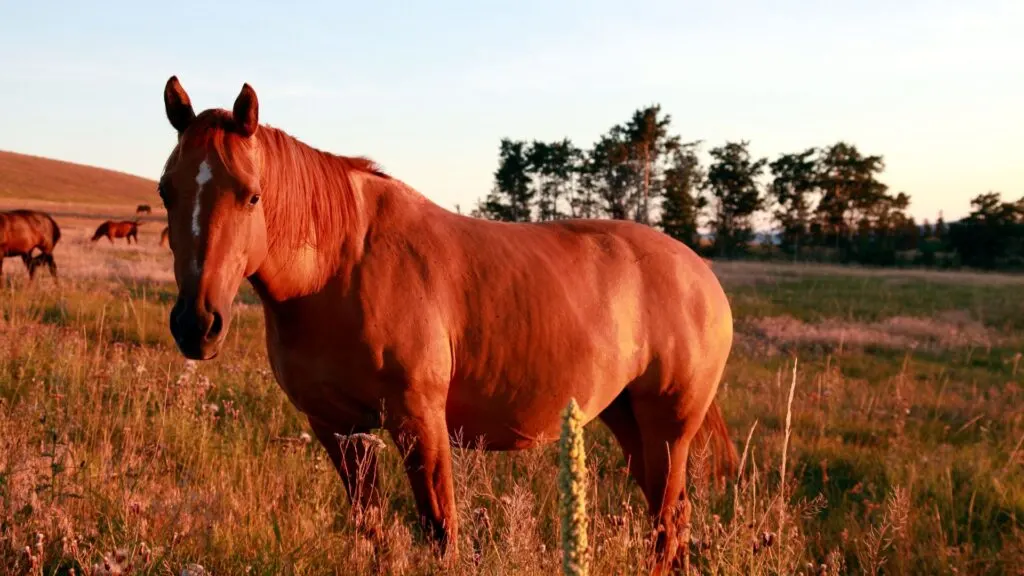
Famous Sorrel Horses in History and Culture
Throughout history, sorrel horses have been celebrated for their beauty and spirit. One of the most famous sorrel horses was Secretariat, often called the greatest racehorse ever. While his red coat resembled ‘sorrel,’ he was registered a ‘chestnut’ in accordance with the Jockey Club’s rules.
Dash for Cash is one of the greatest running Quarter Horses ever. He was the World Racing Quater Horse Champion in 1976 and 1977, but his most prominent achievement was as a stud. He sired many of Quarter Horse racing’s best racehorses. He was inducted into the American Quarter Horse Hall of Fame in 1997.
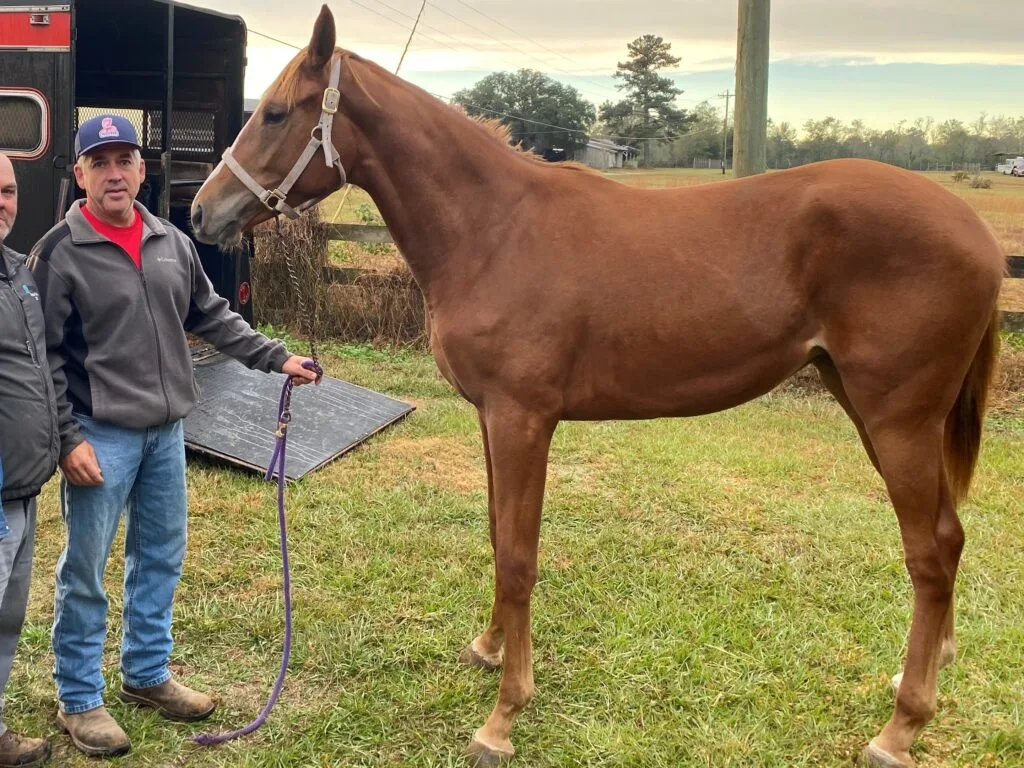
The Genetics Behind the Sorrel Color
Sorrel describes a horse with a copper-red coat and a matching colored mane and tail. Chestnut horses have a red base coat with a mane and tail of the same or lighter color. Black hair is not present in either sorrel or chestnut horses.
At the heart of every horse’s coat color lies a fascinating interplay of genetics. The basic coat colors of horses – black, bay, and chestnut – are determined by two primary genes: the Extension gene (E) and the Agouti gene (A). These genes control the distribution and presence of black and red pigments in the horse’s coat.
The Genetic Blueprint of Sorrel
Sorrel horses specifically owe their captivating hue to a particular combination of these genes. The key lies in the Extension gene, which comes in two forms: dominant (E) and recessive (e). A sorrel horse has two copies of the recessive ‘e’ allele (ee), which inhibits the production of black pigment, allowing the red pigment to dominate and give the horse its characteristic copper-red coat.
Sorrel vs. Chestnut: A Genetic Perspective
Distinguishing Shades of Red
While both sorrel and chestnut horses carry the ‘ee’ genotype, subtle variations in other genetic factors can influence the exact shade of red. Additional genes, such as the Flaxen gene, can lighten the mane and tail, often seen in chestnut horses but less commonly in sorrels.
Visualizing the Genetics
To better understand this, imagine the horse’s genetic makeup as a painter’s palette. The ‘E’ and ‘e’ alleles are like primary colors, with ‘ee’ blending to create the vivid red of a sorrel horse. Other genes act as modifiers, adding nuances and depth to the coat color, like an artist mixing shades to achieve the perfect hue.
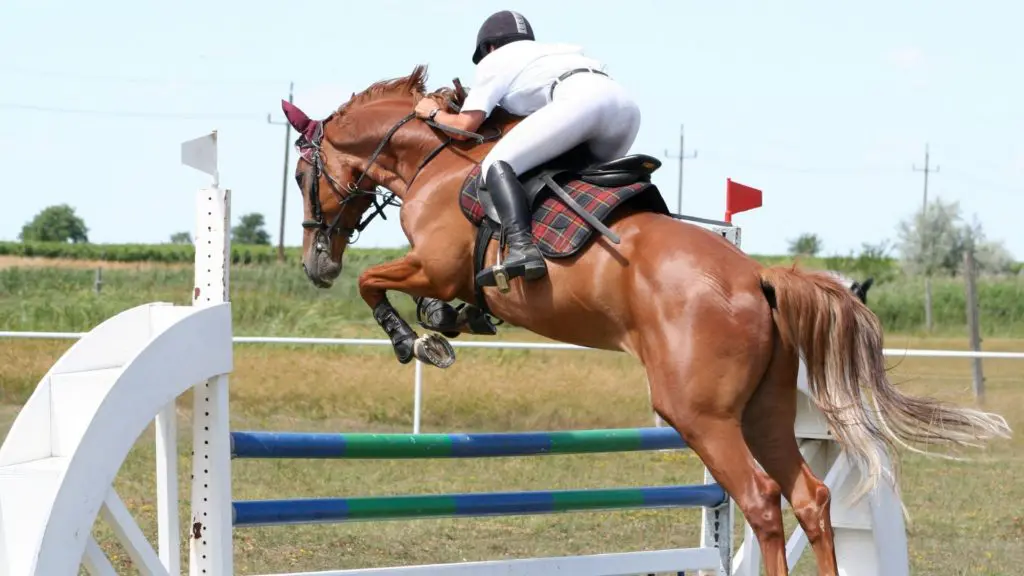
Sorrel Horses in Different Equestrian Cultures
Discover how the stunning sorrel horse is celebrated and utilized across various equestrian cultures. From the Western plains to English show rings, the sorrel horse’s vibrant coat and spirited nature have earned it a special place in diverse riding traditions.
The Western Viewpoint
In Western riding communities, sorrel horses are often celebrated for their striking appearance and versatility. Renowned for their agility and speed, they are popular in rodeo events, barrel racing, and cutting. “Sorrel horses bring a blend of beauty and brawn, making them ideal for the demands of Western riding,” says John Miller, a seasoned rodeo champion.
The English Riding Perspective
Conversely, sorrel horses are admired for their elegance and grace in English riding disciplines. They are frequently seen in show jumping, dressage, and eventing. Emma Thompson, an English riding instructor, says, “The sorrel’s vibrant coat adds a touch of glamour in the show ring, complementing their refined movements.”
Symbolism in Equestrian Traditions
In Western and English riding traditions, the sorrel horse is more than a partner in sport; it’s a symbol of passion and vitality. In Western riding, its fiery hue complements the dynamic and adventurous spirit of rodeo and trail riding. In English disciplines, the sorrel’s bright color is often associated with elegance and high spirit, making them standout performers in the show ring.
Global Variations on Red Horse Terminology
The perception of sorrel horses varies globally. In Europe, the term ‘chestnut’ is more commonly used to describe horses with a similar red coat, regardless of the shade. “In the UK, we generally refer to all red horses as chestnuts, but the sorrel’s brighter hue is definitely recognized and appreciated among enthusiasts,” notes equine specialist Eric Frenchy.
In contrast, in regions like Australia and South America, sorrel horses are often distinguished by their specific shade and highly valued in competitive and working environments. “In Argentina, a bright sorrel horse is a symbol of pride in the field of polo,” shares Manuel Mendez, a polo trainer from Buenos Aires.
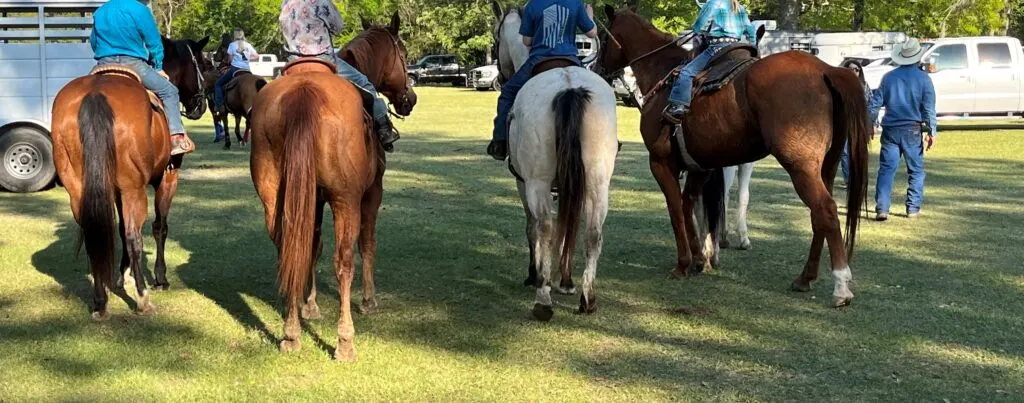
The Beauty and Diversity of Sorrel Horses
Sorrel horses exhibit a captivating range of shades, from the light, golden-red reminiscent of autumn leaves to a deep, rich burgundy akin to fine wine. This diversity in coloration is one of the sorrel’s most enchanting traits. The lighter sorrels often display a bright, almost luminous red, while the darker variants exude a more subdued, equally striking, burgundy hue.
Sorrels with Flaxen Manes and Tails
Sorrel horses with flaxen manes and tails present a striking contrast that captivates the eye. This unique combination features the classic vibrant sorrel body color, paired with a mane and tail of a pale, yellowish-gray hue reminiscent of sun-bleached straw. This contrast is visually appealing and rare, making these horses stand out in any setting.
Genetics Behind the Flaxen Contrast
The flaxen mane and tail in sorrel horses result from specific genetic variations. While the sorrel color is due to the recessive ‘ee’ genotype, the flaxen trait is influenced by genetic factors that lighten the mane and tail. This genetic interplay does not affect the body color, resulting in the distinctive flaxen mane and tail on a sorrel base.
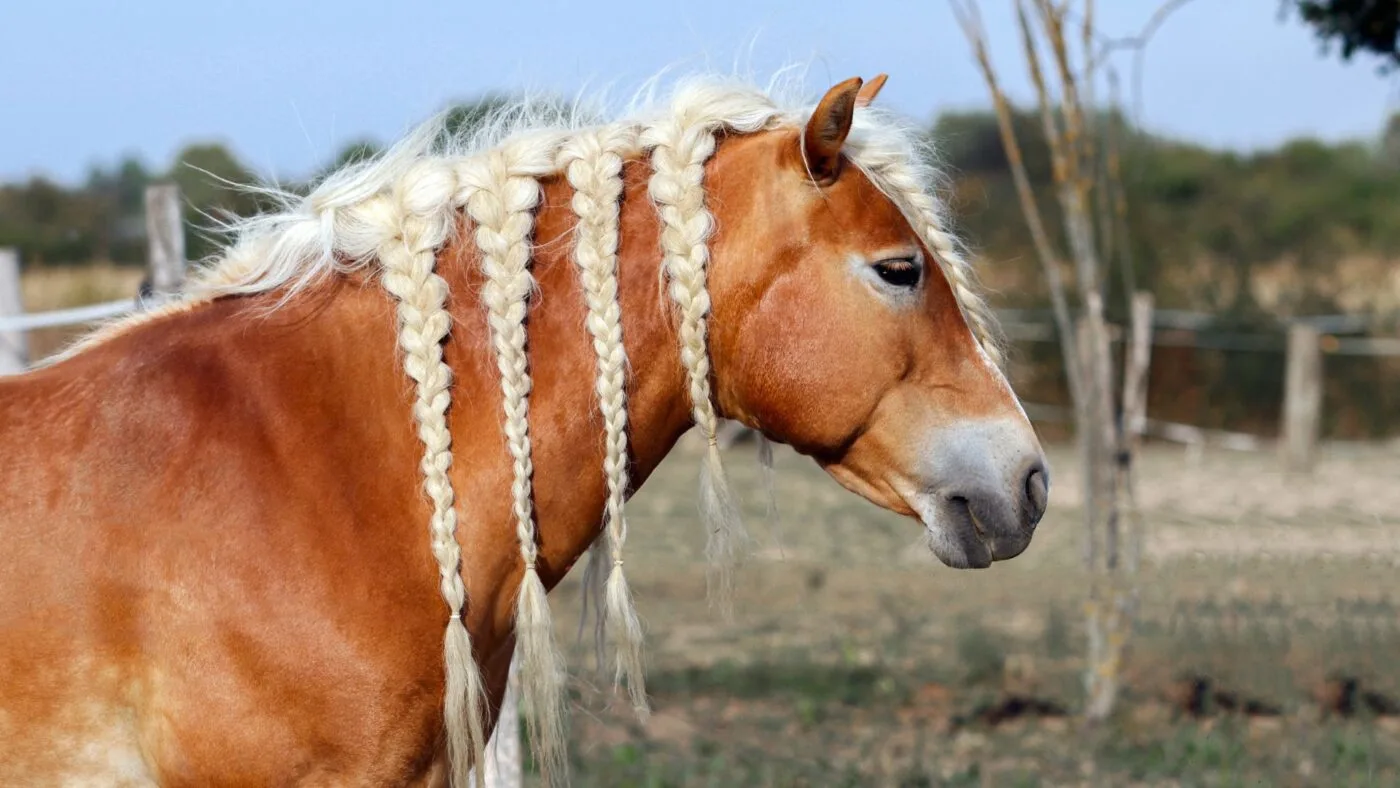
Sorrel Horses in Different Breeds
The sorrel color graces a variety of horse breeds, each adding its unique flair to this vibrant hue.
- American Quarter Horse: Known for its muscular build, the sorrel color in Quarter Horses adds to its majestic and powerful appearance. The shade is particularly popular in this breed, often seen in racing and rodeo events.
- Thoroughbred: Thoroughbreds often exhibit a sleek, athletic physique complemented by their vibrant coat color. While they may display the bright, eye-catching hue characteristic of sorrel horses, they are registered with the Jockey Club as chestnuts.
- Arabian: Sorrel Arabians are admired for their elegant coat, which complements their refined and graceful features. The color accentuates their expressive eyes and distinctive head shape.
- Tennessee Walking Horse: The sorrel shade in Tennessee Walkers highlights their smooth gait and gentle temperament, making them a favorite for show and leisure riding.
- Belgian Draft Horse: In this breed, the sorrel color often comes with a flaxen mane and tail, creating a striking contrast against their robust and sturdy frame.
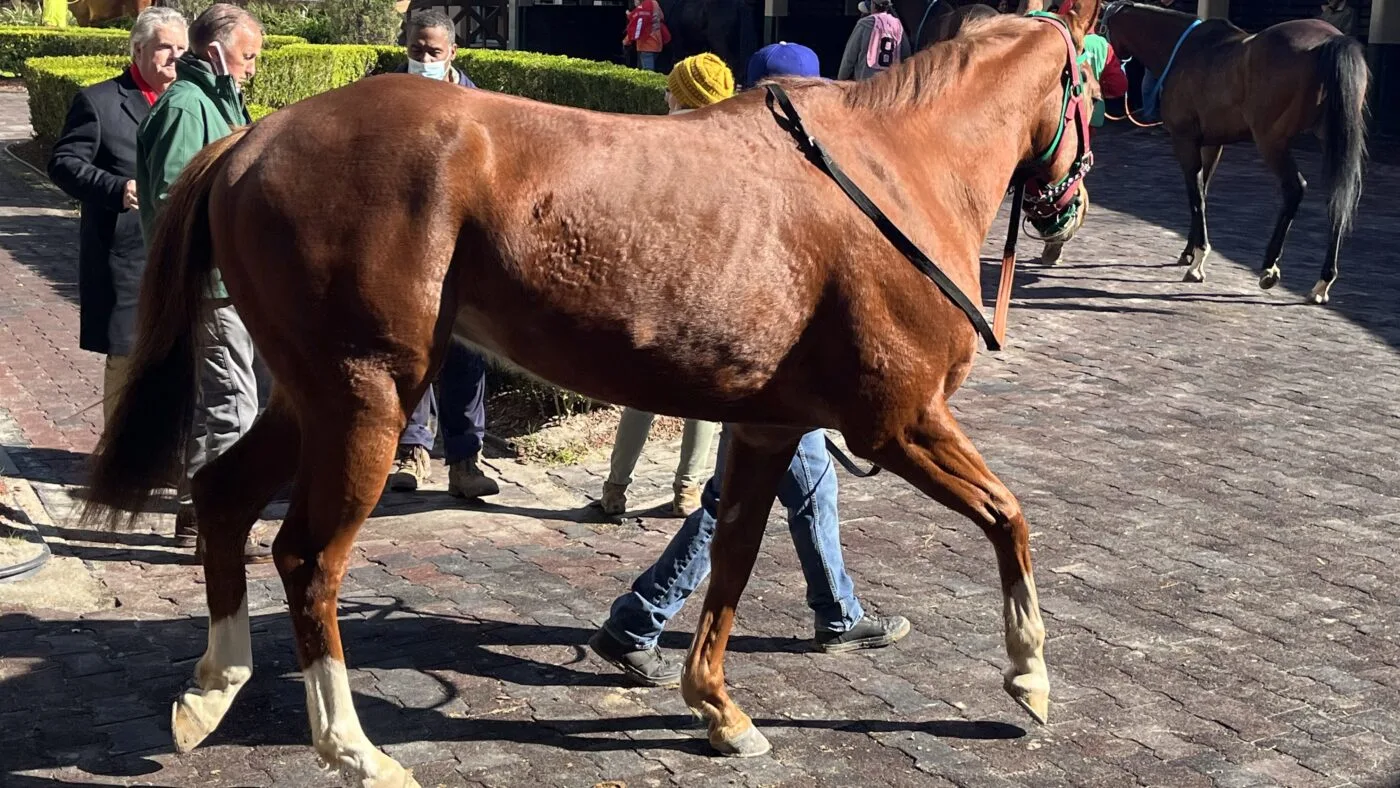
Cultural and Emotional Connection
Beyond their physical beauty, sorrel horses hold a special place in many cultures. Their vibrant coats are often seen as symbols of warmth, energy, and life. In folklore and literature, these horses are frequently depicted as spirited companions, embodying courage and a zest for adventure. This cultural significance enhances the bond between humans and sorrel horses, making every interaction with them more meaningful.
Embracing the Sorrel Horse in Equestrian Life
While grooming and maintenance for sorrel horses follow the standard practices applicable to all horses, certain techniques can help accentuate their vibrant coat color. Regular grooming keeps their coat healthy and enhances its natural shine, making the sorrel color even more striking.
Using coat conditioners and sun-protective products can help maintain the richness of their color, especially in sunnier climates where fading might occur.
Below is a YouTube video of a sorrel quarterhorse barrel racing.
Health Considerations: A General Overview
It’s important to note that health considerations for sorrel horses are not distinct from those of other horses. However, being vigilant about skin conditions, which might be more visible against the lighter shades of sorrel, is advisable. Regular health check-ups, a balanced diet, and routine care are as essential for sorrel horses as they are for any horse.
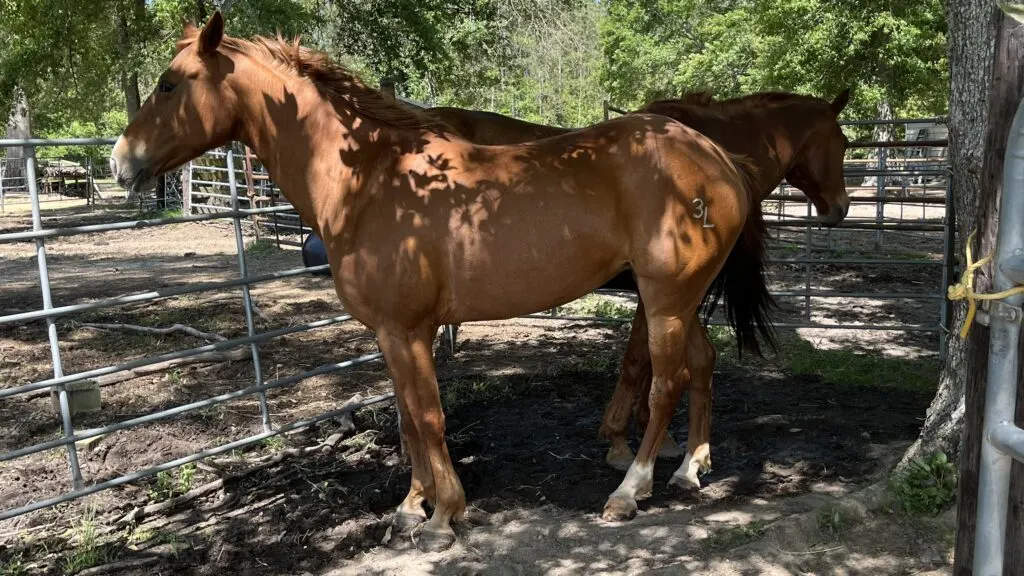
FAQ’s: Understanding Sorrel Horses
Is a sorrel horse the same as a chestnut?
While often used interchangeably, ‘sorrel’ typically refers to lighter, more vibrant red shades, whereas ‘chestnut’ encompasses a broader range of reds, from light to dark.
Can sorrel horses have markings?
Yes, sorrel horses can have white or lighter markings, although their primary coat color remains a shade of red.
Are sorrel horses more prone to health issues?
Sorrel horses do not have specific health issues related to their coat color. Like all horses, they require regular health checks and care.
What breed of horse is a sorrel?
Sorrel isn’t a breed but rather a color. Many breeds have horses with sorrel color. Sorrel horses have copper-colored coats with manes and tails of the same shade.
Conclusion: Celebrating the Splendor of Sorrel Horses
Exploring sorrel horses takes us into a world where their unique red coats are just the start. These horses aren’t just about their looks; they bring a mix of strength and personality that grabs the attention of anyone who loves horses.
We’ve covered what makes their color stand out, how they fit into the horse world, and why people are drawn to them. Sorrel horses are more than their appearance; they’re about the energy and presence they bring.
Now, I want to hear from you. Got any stories about sorrel horses? Maybe a memorable ride, a competition win, or just the everyday moments that make owning a sorrel horse special? Your experiences enrich the conversation. Drop your stories below and let’s dive deeper into what makes sorrel horses such standout companions.
Latest Research and Studies
Recent Advances in Equine Genetics: Recent studies in equine genetics have provided deeper insights into coat color variations, including the sorrel color. Researchers have identified specific gene mutations responsible for the diverse range of red shades in horses, enhancing our understanding of equine color genetics.
Stay Connected and Informed:
- If you found this guide helpful, consider signing up for our newsletter for more insights and updates on horses.
- For personalized advice or specific inquiries, feel free to contact me directly. I’m here to help.
Join the Conversation:
- I encourage you to share your thoughts, experiences, or questions in the comments section below. Let’s create a community of informed and passionate horse owners.
- Don’t forget to share this article with your network. Use the social share buttons to spread knowledge and love for horses.
Thank you for reading, and I look forward to connecting with you, whether it’s through our newsletter, direct communication, or in the comments section.
